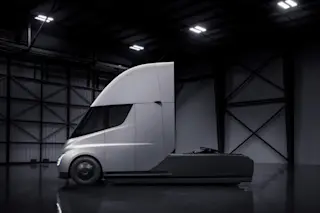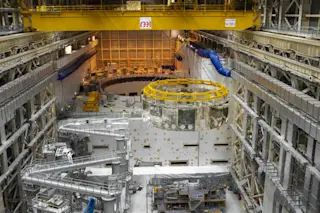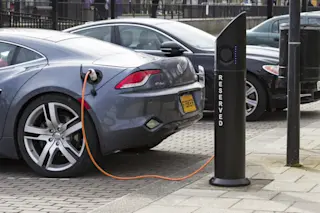(Credit: Tesla) Elon Musk finally revealed the Tesla Semi, an electric big-rig he professes will outstrip the diesel fleets that have dominated American freight for decades. The Tesla CEO flaunted his latest creation and its “BAMF performance”—it’s a technical term, he says—at an unveiling ceremony Thursday night in Hawthorne, CA. He outlined the semi’s specs, which include parlor tricks like going from 0-60 mph in 5 seconds and potentially industry-upending figures for driving range and cost of operation. “It’s incomparably better than any other truck on the road,” he said.
With the semi, Musk aims to bring sustainable energy to an industry that accounts for about 20 percent of the United States’ greenhouse gas emissions in the transportation sector. It’s Tesla’s latest push to permeate the major areas of transportation. Though he didn’t mention a price, Musk said the semi will go to production in 2019. The year after that, ...















